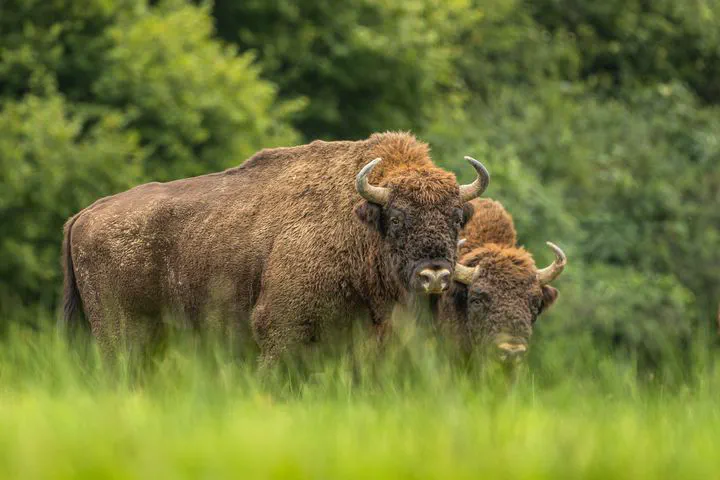Millennial processes of population decline, range contraction and near extinction of the European bison
13 Dec, 2023· ,,,,,,,,,,·
0 min read
,,,,,,,,,,·
0 min read
Dr. July Pilowsky
Stuart C. Brown
Bastien Llamas
Ayla L. Van Loenen
Rafał Kowalczyk
Emilia Hofman-Kamińska
Ninna H. Manaseryan
Viorelia Rusu
Matija Križnar
Carsten Rahbek
Damien A. Fordham
 European bison in Poland. Credit: Szymon Bartosz.
European bison in Poland. Credit: Szymon Bartosz.Abstract
European bison (Bison bonasus) were widespread throughout Europe during the late Pleistocene. However, the contributions of environmental change and humans to their near extinction have never been resolved. Using process-explicit models, fossils and ancient DNA, we disentangle the combinations of threatening processes that drove population declines and regional extinctions of European bison through space and across time. We show that the population size of European bison declined abruptly at the termination of the Pleistocene in response to rapid environmental change, hunting by humans and their interaction. Human activities prevented populations of European bison from rebounding in the Holocene, despite improved environmental conditions. Hunting caused range loss in the north and east of its distribution, while land use change was responsible for losses in the west and south. Advances in hunting technologies from 1500 CE were needed to simulate low abundances observed in 1870 CE. While our findings show that humans were an important driver of the extinction of the European bison in the wild, vast areas of its range vanished during the Pleistocene–Holocene transition because of post-glacial environmental change. These areas of its former range have been climatically unsuitable for millennia and should not be considered in reintroduction efforts.
Type
Publication
Proceedings of the Royal Society B
Extinction Dynamics
Rewilding
Process-Based Model
Megafauna
Range Dynamics
Conservation Biogeography
Authors
he / they / she
Computational ecologist using models to understand the natural world.